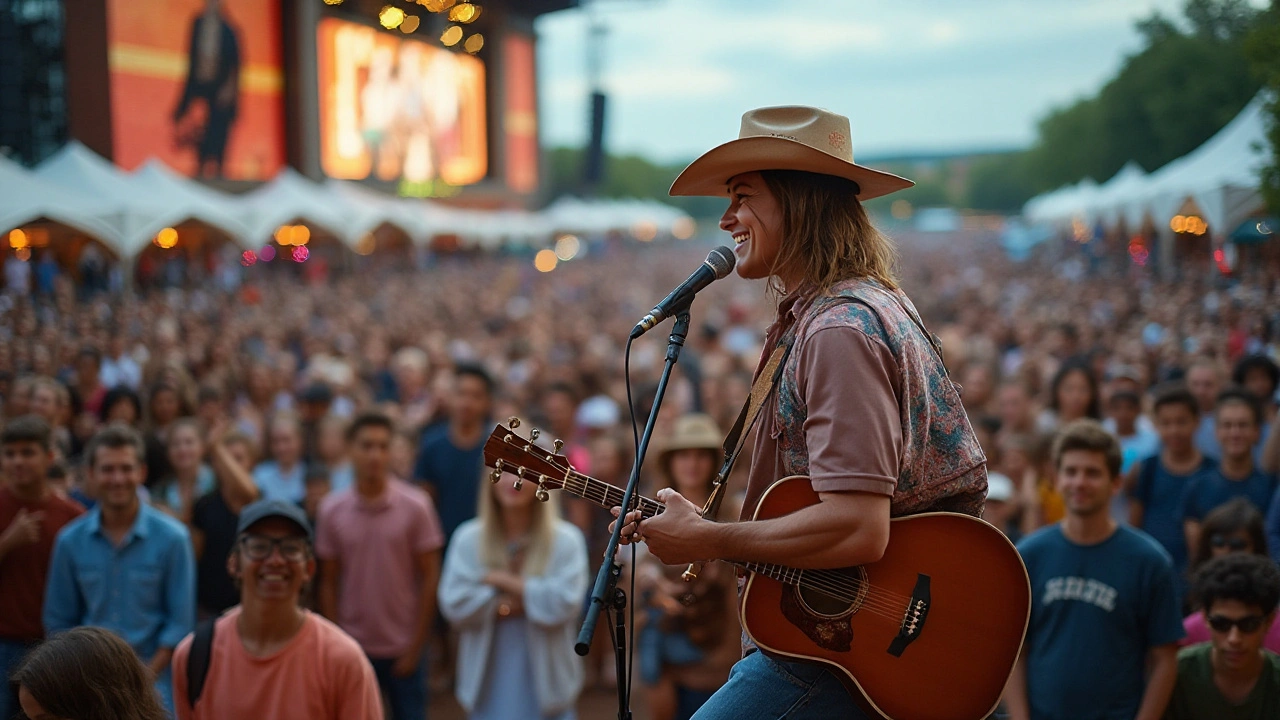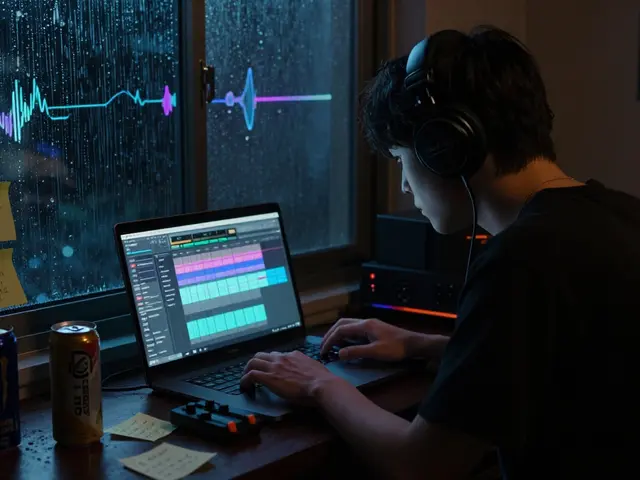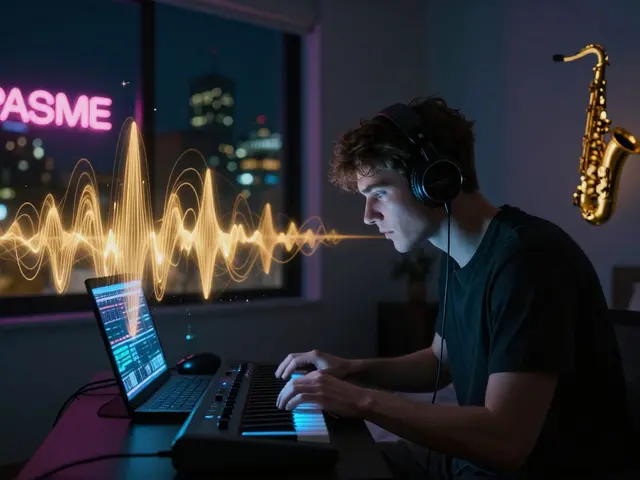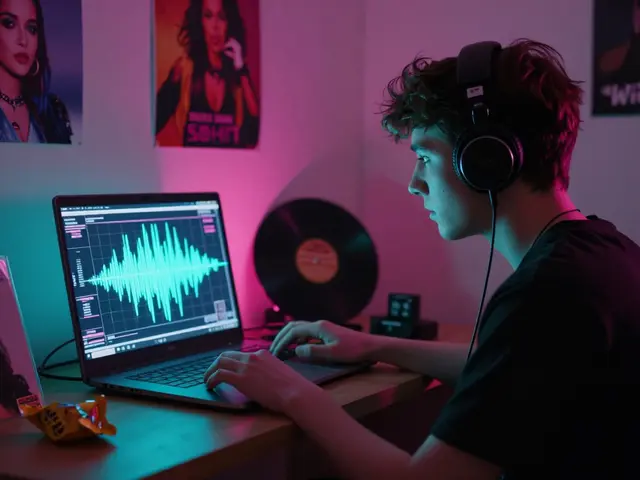Country music, known for its rich history and storytelling, is continuously evolving. From its roots in folk and blues, it has come a long way and continues to adapt to the times.
As we look to the future, several trends and predictions stand out. Genre-blending is becoming more common, with country artists collaborating with pop, rock, and even hip-hop stars. This fusion is creating fresh, exciting sounds that appeal to a wider audience.
Technology is also playing a significant role in this evolution. The way music is produced, distributed, and consumed has changed drastically. Streaming services, social media, and digital platforms enable artists to reach global audiences effortlessly.
Independent artists are on the rise, thanks to accessible recording tools and online distribution channels. They are able to share their music without needing a major label, challenging the traditional industry setup.
Finally, the demographics of country music listeners are shifting. Younger audiences are discovering and embracing the genre, bringing in new tastes and expectations.
- The Evolution of Country Music
- Genre-Blending and Crossovers
- The Role of Technology
- Rise of Independent Artists
- Changing Demographics of Listeners
The Evolution of Country Music
Country music has a rich history that dates back to the early 20th century. It originated in the rural Southern United States, with influences from Appalachian folk music, blues, and gospel. This blend of styles created a unique sound that quickly resonated with listeners across the country. The earliest country recordings were made in the 1920s, featuring artists such as The Carter Family and Jimmie Rodgers, who are often referred to as the "founding families" of country music.
Moving into the 1950s and 1960s, country music began to incorporate elements of rock and roll. Artists like Johnny Cash and Patsy Cline became household names, bringing country music into the mainstream. This period also saw the rise of the Nashville Sound, characterized by smooth vocals and lush orchestral arrangements. As country music's popularity grew, so did its subgenres. Outlaw country, with its rebellious spirit and raw sound, emerged in the 1970s, led by the likes of Willie Nelson and Waylon Jennings.
The 1980s and 1990s brought further changes, with the advent of country pop. Artists such as Garth Brooks and Shania Twain achieved massive commercial success, blending traditional country sounds with pop melodies. This era also saw the rise of music videos, as country artists embraced MTV and other music television channels to reach new audiences. The genre continued to gain momentum into the 21st century, with crossover artists like Taylor Swift and Keith Urban pushing the boundaries of what country music could be.
Modern Country Music
Today's country music is more diverse than ever before. While the genre still cherishes its roots, it has also embraced contemporary influences. Modern country music often features elements of pop, rock, and hip-hop, creating a sound that is both fresh and familiar. This evolution reflects the changing tastes of listeners, as well as the creative ambitions of artists. Acts like Kacey Musgraves and Chris Stapleton have garnered critical acclaim for their innovative approaches to country music.
"Country music has always been about three chords and the truth. As long as the storytelling remains authentic, the sound can evolve in countless ways." — Miranda Lambert
One of the driving forces behind the genre's evolution is its ability to connect with a wide audience. Country music tells stories that resonate with people from all walks of life. Whether it's a tale of heartache, a celebration of love, or a reflection on life's simple pleasures, country songs have a way of touching the soul. This universal appeal has helped the genre maintain its popularity, even as it continues to evolve.
As we look to the future, it's clear that country music will keep growing and changing. The next generation of artists is already making their mark, bringing new sounds and perspectives to the table. With its rich history and endless potential for reinvention, country music is poised to remain a vital part of the musical landscape for years to come.
Genre-Blending and Crossovers
Country music has always been a genre rooted deeply in tradition, but it has never shied away from evolving and branching out. In recent years, we're witnessing an exciting era where genre-blending and crossovers are more prevalent than ever. This trend is reshaping the soundscape of country music and expanding its reach beyond its traditional boundaries.
One significant shift has been the merging of country music with pop, rock, and even hip-hop. This is not entirely new, but the extent and success of such collaborations have reached unprecedented heights. Artists like Kacey Musgraves and Lil Nas X have demonstrated the potential of these genre-crossing ventures. Lil Nas X's 'Old Town Road' is a prime example, blending country with trap beats, and it became a global sensation, breaking records and topping charts globally.
What makes genre-blending so appealing is its ability to create fresh, innovative sounds that attract diverse audiences. Collaborations between country musicians and artists from other genres introduce new instrumentation, rhythms, and themes. For instance, Florida Georgia Line's partnership with pop star Bebe Rexha on 'Meant to Be' garnered massive commercial success and topped the Billboard Hot Country Songs chart for a record-breaking 50 weeks.
Besides chart-topping singles, genre-crossing has also introduced country music to younger audiences. Younger generations who might find traditional country less appealing are exposed to the genre's core elements in a contemporary, relatable context. This trend is crucial for the genre's longevity and relevance in an ever-changing music industry.
Country artists are not only exploring other genres but also incorporating diverse musical influences into their albums. This approach breaks down barriers within the industry, allowing for a more inclusive and dynamic musical environment. By embracing various styles, country music has the unique opportunity to evolve while preserving its narrative-rich storytelling roots.
The rise of streaming platforms has facilitated this diversification. Artists can experiment and release music to a global audience without the constraints of traditional distribution channels. Tools like Spotify and Apple Music's algorithmic playlists often mix genres, introducing listeners to new songs they might not seek out independently. Streaming also allows for real-time feedback, enabling artists to gauge audience reaction and adapt accordingly.
Industry experts often emphasize the importance of keeping an open mind about genre definitions. As songwriter Shane McAnally said,
“The walls are down. It’s not about genres of music. It’s about the best song winning.”This mindset is fostering a creative environment where the best ideas, regardless of origin, are celebrated and embraced.
However, this blending of genres is not without its critics. Traditionalists argue that the soul of country music could be diluted. They fear that the characteristics that define the genre, such as its storytelling and instrumental authenticity, may be lost. Yet, many believe this evolution is a natural progression, mirroring broader cultural and technological shifts. The challenge lies in balancing the new with the time-honored elements that have long defined country music.
In conclusion, the current trend of genre-blending and crossovers is setting the stage for a vibrant future for country music. By breaking down musical boundaries, it enriches the genre and broadens its appeal. The ongoing dialogue between innovation and tradition is likely to continue, shaping how country music evolves in the years to come. Artists, fans, and industry leaders alike are witnessing a transformative period where creativity knows no bounds.
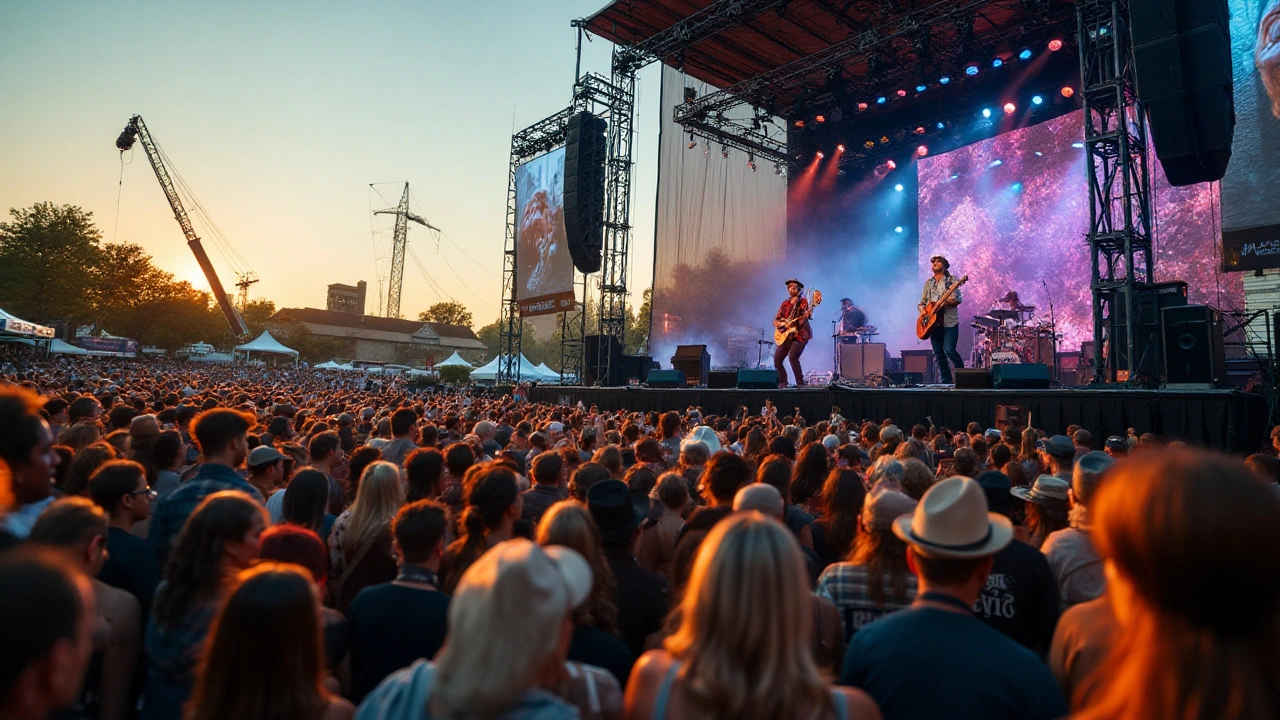
The Role of Technology
Technology has dramatically transformed the music industry, and country music is no exception. One of the biggest changes has been the rise of streaming services like Spotify, Apple Music, and even YouTube. These platforms have completely altered how fans discover and listen to music. They have given country artists, both established and emerging, an unprecedented opportunity to reach a global audience.
According to a report from Midia Research, streaming now accounts for over 80% of the music industry’s revenue. The accessibility of these services means that listeners can easily explore new genres and artists, contributing to the growing popularity of country music outside traditional markets.
Social media has also revolutionized how artists connect with their fans. Platforms like Instagram, TikTok, and Twitter allow musicians to share behind-the-scenes glimpses of their lives, create viral moments, and build loyal fan bases. These platforms have become essential for promoting new releases and engaging with fans in real-time.
The Impact of Digital Production Tools
The evolution of digital production tools has made it easier for artists to produce high-quality music without needing access to expensive studio equipment. Software like Pro Tools, Logic Pro, and Ableton Live have democratized the production process, allowing independent artists to create professional-sounding recordings from their home studios.
This shift has led to a surge in the number of independent country artists releasing music. These artists often have more creative freedom, as they are not bound by the constraints of major labels. They can experiment with different sounds and styles, leading to a more diverse and innovative country music scene.
Another significant development is the use of data analytics. Artists and labels can now use data from streaming services and social media to gain insights into listener behavior. This information helps them tailor their marketing strategies, plan tours, and even make decisions about which songs to release as singles.
The Future of Technological Integration
Looking ahead, technology is expected to play an even more integral role in the music industry. Virtual reality (VR) and augmented reality (AR) are emerging as new frontiers for live music experiences. Imagine attending a country music concert from the comfort of your living room, with VR technology providing an immersive, front-row experience.
The rise of blockchain technology may also impact how artists are compensated. Blockchain can create a transparent and secure way to manage royalties and ensure that artists are fairly paid for their work. Projects like Audius are already exploring this potential, aiming to create decentralized music streaming platforms.
The future of music is intertwined with technology. Artists who embrace these innovations will be better positioned to succeed in an ever-evolving industry, says Mark Mulligan, a music industry analyst at Midia Research.
Rise of Independent Artists
The landscape of country music is undergoing significant changes, and one of the most notable shifts is the rise of independent artists. In the past, breaking into the music industry often required the backing of a major record label. Today, this is no longer the case. Thanks to advancements in technology and changes in how music is distributed and consumed, artists can now produce, share, and promote their music independently.
Platforms like Spotify, Apple Music, and SoundCloud have democratized access to audiences. This allows up-and-coming artists to upload and share their work with listeners around the world without the need for a traditional record deal. Social media has also played a crucial role. Artists can build a fanbase on Instagram, TikTok, and Twitter, engaging directly with their audience in a way that was not possible before.
The availability of affordable recording equipment and software has also leveled the playing field. A decade ago, recording a professional-sounding album required expensive studio time and equipment. Now, artists can achieve high-quality results from home studios with tools that fit a modest budget. This has led to an explosion of creativity and diversity in the music being produced.
"The digital age has revolutionized the music industry, giving power back to the artists," says Emily Blake, a music industry analyst. "This shift has allowed for more diversity and innovation in the genre."
Several successful country artists have emerged from this independent route. For instance, Luke Combs and Kacey Musgraves initially gained momentum through grassroots efforts and digital platforms before being recognized by major labels. Their success stories have inspired many others to pursue a similar path, reinforcing the notion that talent and hard work can trump traditional industry gatekeeping.
Moreover, the rise of independent artists has contributed to the genre-blending trend in country music. Without the constraints imposed by traditional labels, artists feel freer to experiment and incorporate elements from various music styles into their work. This has resulted in innovative and unique sounds that push the boundaries of what country music can be.
Another interesting development is the role of crowdfunding platforms like Kickstarter and Patreon. These platforms enable artists to finance their projects directly through fan contributions. In return, fans gain exclusive access to new music, merchandise, and other perks. This model not only helps artists maintain creative control but also fosters a stronger connection between them and their supporters.
The rise of independent artists is reshaping the country music industry in ways that were unimaginable a few years ago. It's creating a more inclusive and diverse musical landscape, where talent and creativity take center stage. As technology continues to evolve, independent artists will likely play an even more significant role in defining the future of country music.
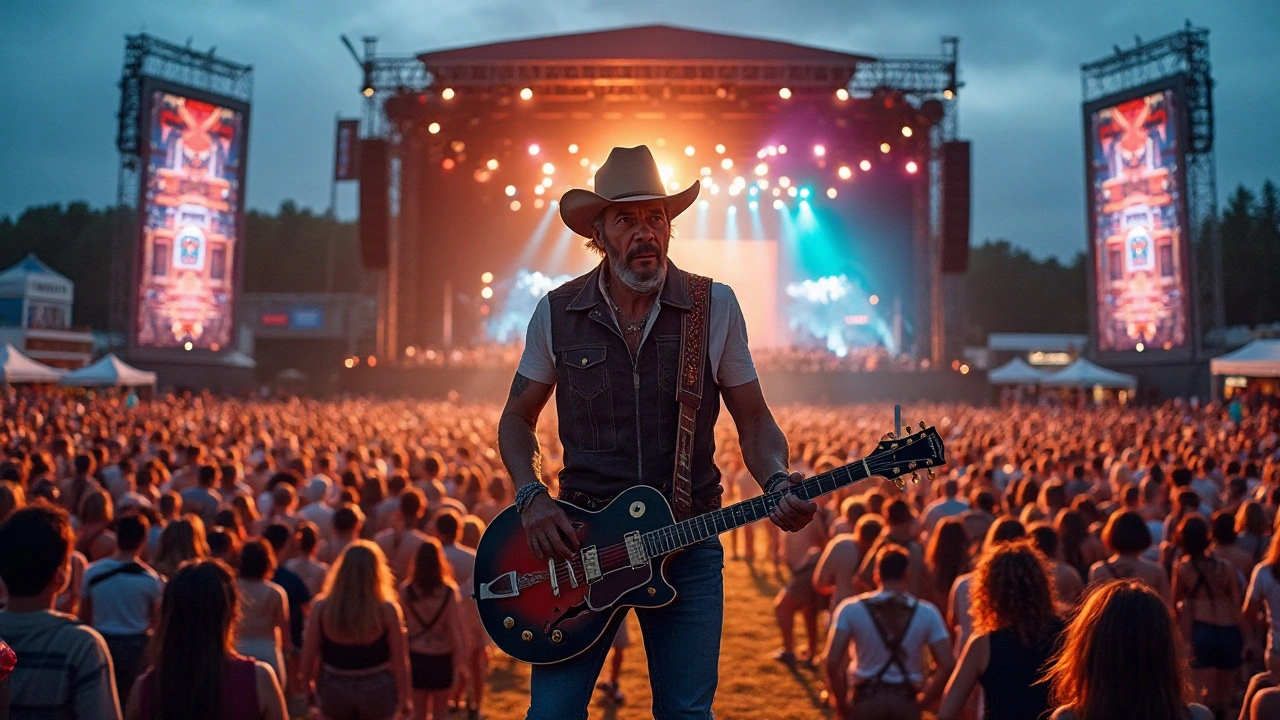
Changing Demographics of Listeners
Country music has long been associated with a particular demographic, traditionally resonating most with rural communities and older generations. However, in recent years, this landscape has started to shift dramatically. One of the most noticeable changes is the increasing number of younger listeners discovering and embracing the genre. Millennials and Gen Z are finding connections with country music, drawn by its authenticity and storytelling.
Several factors contribute to this shift. First, the fusion of country music with genres like pop, rock, and even hip-hop has made it more accessible and appealing to a diverse audience. Artists like Kacey Musgraves, Lil Nas X, and Florida Georgia Line are breaking down barriers and attracting fans who might not have previously considered listening to country music. This blending of styles is creating a whole new audience for the genre.
Additionally, social media platforms like TikTok and Instagram have played a significant role in bringing country music to younger ears. Viral challenges, dance trends, and influencer collaborations have introduced country songs to millions of users. The social media presence of artists has become a powerful tool for engaging with fans and expanding their reach. According to a study by Nielsen, social media users who follow country music artists are 30% more likely to discover new music through these platforms.
Another factor is the urbanization of country music. While the genre still retains its rural roots, there's a noticeable push towards urban themes and settings. This shift makes country music more relatable to city dwellers who might have previously felt disconnected from its traditionally rural narratives. Urban experiences, modern love stories, and contemporary struggles are themes increasingly explored in country music, making it resonate with a broader audience.
Changes in the industry reflect the growing diversity of country music's fan base. There is more representation in terms of race, gender, and sexual orientation. Rising stars like Mickey Guyton and Orville Peck are bringing new perspectives and voices to the genre. This inclusivity is crucial for attracting a wider and more varied listener base. The acceptance and celebration of diverse voices make the genre richer and more appealing.
The rising diversity also affects the way country music is marketed and consumed. Streaming services like Spotify and Apple Music have algorithms that tailor playlists to individual tastes, helping new listeners discover country music alongside their favorite genres. This personalized approach has been a game-changer, drawing in people from all walks of life. The ease of access to a vast library of songs enables listeners to explore country music deeply.
"Country music is at a fascinating crossroads. The genre's evolution is attracting a young, diverse audience who find its storytelling and authenticity compelling," says Sarah Trahern, CEO of the Country Music Association.
To summarize, the demographics of country music listeners have shifted noticeably. This change is due to genre-blending, the power of social media, urbanization themes, greater diversity within the industry, and advanced streaming algorithms. These elements collectively contribute to a broader and more diverse audience, ensuring the ongoing evolution and relevance of country music.

